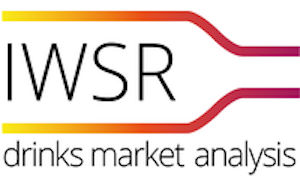The IWSR Organic Wine Report, published this month, has forecast that by 2022, worldwide consumption of still wine will reach 2.43bn nine-litre cases, while the organic wine subcategory is expected to post the strongest increase (+9.2% compound annual growth 2017-2022).
“Overall, total still wine volume is increasing slightly but remains largely flat, while the organic wine market is forecasted to reach 87.5m cases by 2022,” said Mark Meek, IWSR CEO.
“Much of that growth is being driven by Europe, which will account for 78% of the global organic wine market by 2022. The Americas will represent about 12% of total organic wine consumption.”
The EU defines wine as ‘organic’ if it is produced from organic grapes or from oenological techniques and substances authorised for organic wine. In the US, the United States Department of Agriculture mandates that before wine can be sold as ‘organic’, both the growing of the grapes and their conversion to wine must be certified.
Total organic area under vine, the report reveals, has increased by 234% since 2007 and in 2017 surpassed 400,000 ha. The study also includes a comprehensive analysis of organic wine in several key markets, including:
United Kingdom
While overall total wine consumption in the UK is in decline, organic wine volume is expected to post a CAGR of 9.4% 2017-2022. Consumers in the UK are paying an average 38% more for a bottle of organic versus non- organic wine and are buying considerably more red wine than white/rosé (60% versus 40% respectfully). About 72% of organic wine in the UK is Old World, with France, Italy and Spain at the forefront. Organic wine speaks to a broad audience in the country, but primarily caters to wealthier wine lovers and/or regular buyers of organic produce, and those who reside in metropolitan areas (particularly London).
United States
Total still wine consumption is increasing in the US, and though still a niche category, organic wine is slowly taking share from non-organic. Total wine volume in the US is forecasted to increase about 1% CAGR 2017- 2022, with organic wines expected to post 14.3% growth. More than 70% of organic wine sold in the US is produced in the US. Organic wine buyers in the US tend to skew female, Millennial, and higher income, especially those consumers in major markets who focus on healthy lifestyles and have a preference for natural food and beverage products.




